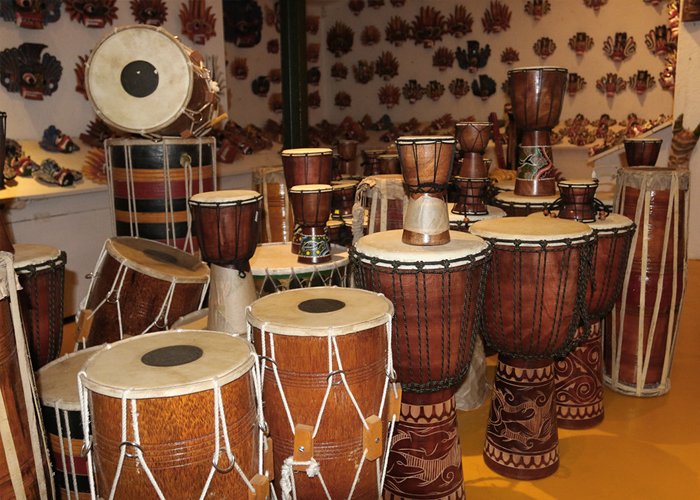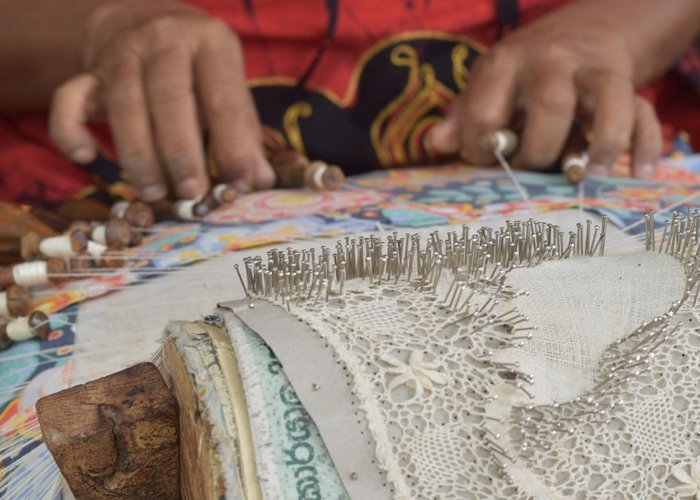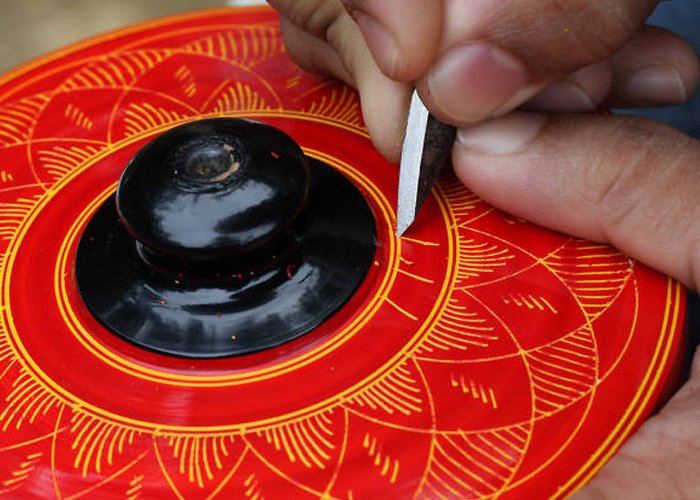Arts & Crafts
- Home
- Arts & Crafts
Arts & Crafts
Sri Lanka has a proud heritage of arts and crafts and you’ll find a distinctive memento to take home among the wide range of items for sale in Colombo. Popular handicrafts include gold and silver jewelry set with gems, wooden masks, intricate lace-work, lacquer work, and ceramics. The full range of handicrafts is available in the many stores in and around the capital, but you can also see the work that goes into creating them as you travel around the country – watch deft hands weaving intricate lace patterns in towns around the south-western coast or see the pottery wheels in action at the small village of Molagoda in the central provinces.
The traditional handicraft of wood carving has been around in Sri Lanka for centuries. Various collections of wood carved products sold in Sri Lanka include ornaments and jewelry pieces, figurines, sculptures, lacquer products, boxes, and toys. Carved wooden furniture and household items are also a popular buy amongst locals and foreigners alike. To purchase or even to get your customized wood carving or set of furniture drop by any woodshop in Moratuwa.
The traditional handicraft of wood carving has been around in Sri Lanka for centuries. Various collections of wood carved products sold in Sri Lanka include ornaments and jewelry pieces, figurines, sculptures, lacquer products, boxes, and toys. Carved wooden furniture and household items are also a popular buy amongst locals and foreigners alike. To purchase or even to get your customized wood carving or set of furniture drop by any woodshop in Moratuwa.
The traditional drums or Bera are undoubtedly part of the Sri Lankan culture. The special skill and craftsmanship required for the making of these drums are possessed by a numbered few—communities across Kurunegala and Hodiyadeniya in the Kandy district.
The body of the drum is fashioned mostly out of Jack’s tree, and the skin is made out of the animal hide. After long hours of divided work within each group, the keen and detail-oriented drum makers present beautifully shaped and designed drums with the right sound.
Drum making is also largely practiced in Hikkaduwa located in the Southern region of Sri Lanka.
Lacemaking, a pastime caught on from Portuguese and Dutch women during the colonial times, has now developed into a reputed household industry, mostly around the South Western Coast of Sri Lanka. Lace-making households can be seen in Weligama, Galle, Matara, and Hambantota. And it is indeed quite fascinating to see how the hands dexterously handle the tools to create intricate patterns, something that you should not miss if you happen to come across a household engaged in the art of making beeralu lace and perhaps even have a go at it if they allow.
A skill that is almost exclusively found amongst women, these lace-making techniques are found as trimmings on dresses, curtains, table spreads, garments, and covers for pillows, cushions, and chairs.
With roots tracing back to Indonesia, the creation of Batiks has earned a title role in the definition of Sri Lankan handicrafts. Its intriguing designs and combinations of hues offer an in-depth look into the picturesque landscapes, flora, and Kandyan era designs from which most design inspirations are sparked.
Each stage of the production process of the Sri Lankan Batik is done by hand and it is fabricated entirely on pure cotton or silk fabric.
Mostly used in sheets, paintings, wall hangings, and decorative items, Batiks have also taken over the fashion industry, resulting in various looks with Batik fabrics.
Looking back, we see that jewelry has always been embedded into the culture and heritage of Sri Lanka. In ancient times, silver, gold, and gem-adorned bangles, necklaces, and rings among other ornaments were considered a mark of royalty and privilege, whereas today, jewelry is available for purchase for any who fancy a piece of perfectly crafted jewelry.
At present, jewelry made in Sri Lanka—either traditional in design or modern and up to international standards, is a very well reputed and sought-after merchandise worldwide. Compared to how jewelry was created generations ago, modern technology and tools have at times been incorporated now, into the making of the jewelry, where one can see age-old traditions and designs infused with modernity.
Sri Lanka, famed for precious and semi-precious stones, especially blue sapphires, is a sure choice when it comes to purchasing jewelry.
These skillfully made traditional handicrafts are a very popular choice amongst tourists and seekers of tokens depicting Sri Lankan culture. Originating in central Sri Lanka, the knowledge of lacquer making has spread throughout the island over the centuries.
The base product for the traditional lacquerware is a wax derived from a species of insects, which is imported from India. Whilst the age-old methods are used by some, new tools and procedures introduced with time are preferred by the others in the making of these complex and exquisite designs.
Colorful and bright walking sticks, handles of flags and hand-fans, bowls, vases, containers, and decorative items made with lacquer work are seen island-wide.
One of the oldest lines of craftwork in Sri Lanka, pottery is still popular in this modern day of steel and plastic.
Clay pottery mainly consists of a spinning wheel with soft clay placed on top, ready to be molded into the required shape, and the follow-up steps such as keeping the shaped pot in a brick oven to solidify the figurine.
The clay pots with their rustic look, solid texture and historic background are perhaps, what draws most towards its charm. In addition to clay pots, terracotta figures, vases, and other utensils are made from clay pottery as well. One of the most famous areas for clay pottery is Molagoda, a small village situated along the Colombo-Kandy road.









